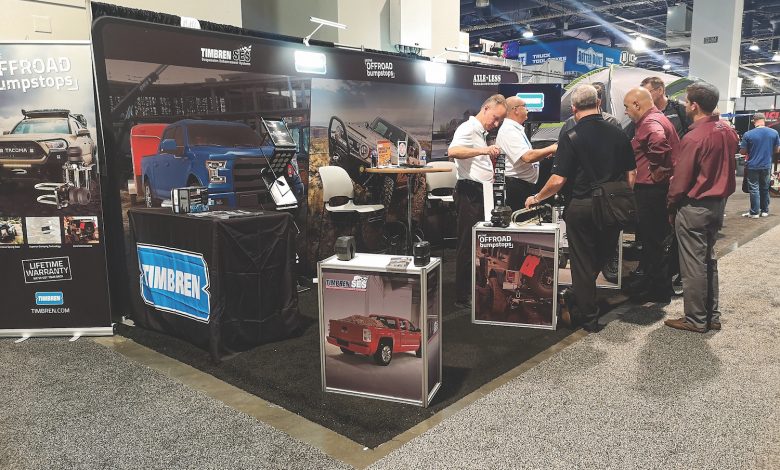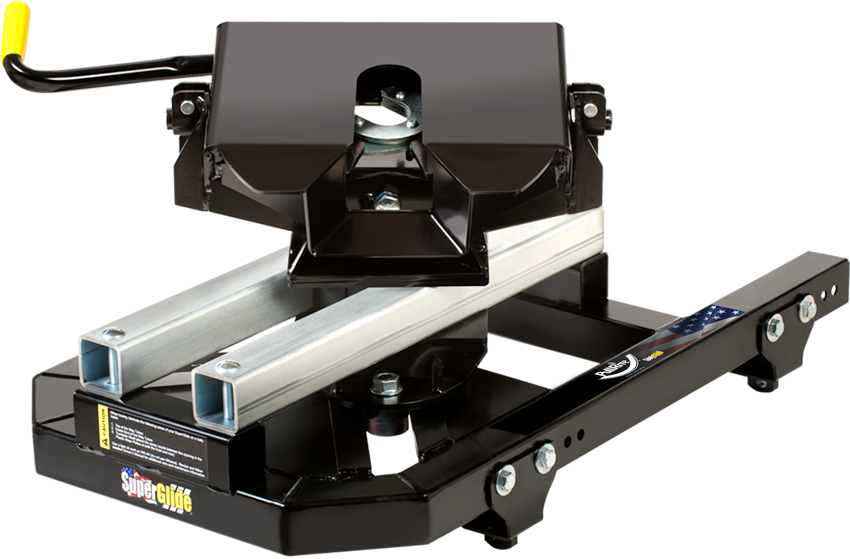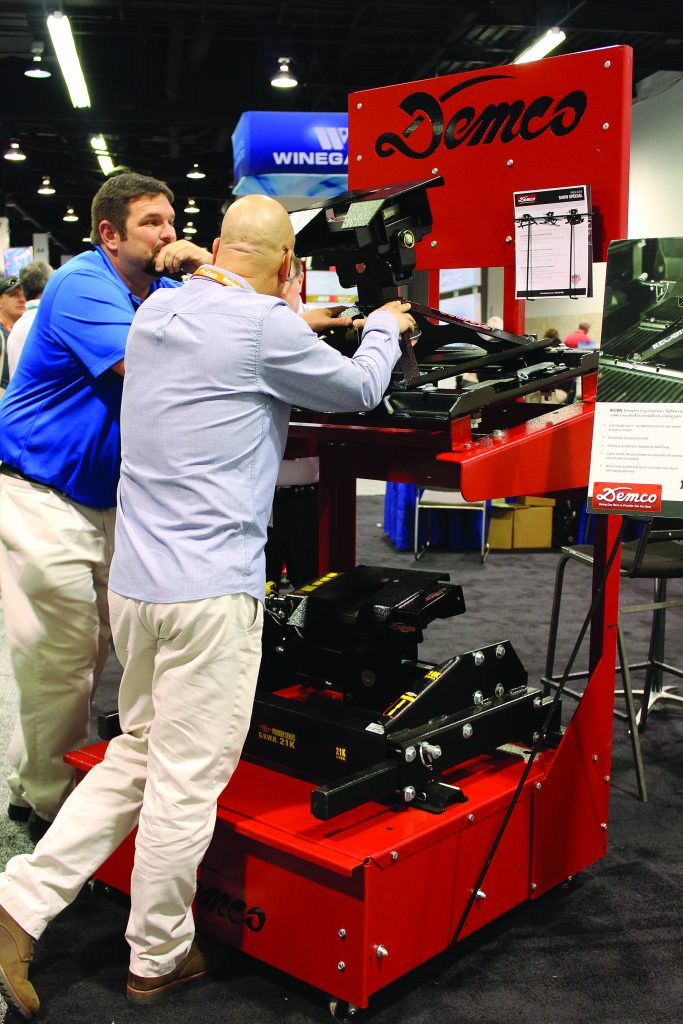RoadMAP to Retail Success
In the age of e-tailers, suppliers say minimum advertised price policies are the way to go in terms of keeping things fair for all sides.

It’s a story Scott Later has heard too many times to count.
The story starts optimistically, with a customer coming into a dealership expressing an interest in buying a particular hitch to tow their new fifth wheel.
The parts manager dutifully leads the customer through the parts department to the hitch section, spends several minutes detailing the product’s features and benefits, takes time to fully answer all of customer’s many questions, and then asks if the customer would like to have the service department schedule an install.
At that point, pointing to the hitch’s posted price, the customer pulls out his smartphone, locates the same product from an online e-tailer and says, “I can get this same product online for XXX dollars cheaper than you are offering. Why should I pay your retail price?”
Later, the national sales manager for Mishawaka, Ind.-based PullRite, used to get an earful from dealers who relayed stories like the one above when he visited their store or met them at trade shows. Dealers were particularly chagrined about being undercut on price by online firms that don’t do installs and don’t offer the same level of service as brick-and-mortar locations.
“We were having not-too-pleasant conversations with our brick-and-mortar dealers,” Later acknowledges. “They were telling us they loved our product and appreciated our support, but then they’d show us a screen shot of our product being sold online for close to their acquisition cost.”
Jim Betournay, vice president of sales for Whitby, Ontario, Canada-based Timbren Industries, a maker of suspension products for RVs, work trucks and other applications, tells much the same story.
“A lot of our brick-and-mortar places were getting upset because people would come to their locations for their expertise, then pull out their phones and say, ‘I can get it for this price,’” he explains. “They were spending their time and effort, but not getting the sale.”

The lowest blow: “Some of them were saying, ‘We don’t want to sell your product because we can’t make any money on it,’” Betournay adds.
Bolstering Brick & Mortar Stores
Betournay and Later hear those stories much less frequently from their dealer partners these days, after both companies have adopted a minimum advertised price (MAP) policy.
It’s an idea that’s been around for much of the past decade in the RV industry, and while it does require writing a policy, monitoring prices and committing to enforcing it, suppliers who have put MAP policies in place say it’s worth the investment.
And while protecting brick-and-mortar retailers is the most-common reason given for instituting a MAP policy, it’s not the only one. Jack Enfield, sales and marketing manager for Elkhart, Ind.-based MORryde International, whose company also enforces MAP, says that while the main focus of MAP has been to protect its dealers, part of the reason has to do with product image.

“The low prices we were seeing online cheapened our products,” he explains. “There were times when it was extremely low, and many times the consumer associates the value with the price that’s paid. It just didn’t match up with the quality we were trying to represent in the marketplace.”
Doug Northcutt, sales manager of the RV and trailer components division of Boyden, Iowa-based Demco Products, echoes Enfield’s sentiments.
“Our product is installation-driven, and we felt the consumer would have a better experience if they weren’t buying on price, but were buying on value,” he says. “We want them to buy from someone who can professionally install it.”
One final reason: “We watched some of our competitors be successful in instituting MAP programs,” says Later.
MAPping the Way
As for the policy itself, minimum advertised price is exactly what it sounds like.
“The minimum advertised price basically means a retailer can sell a product for whatever he wants to, but he can’t advertise it for less than the amount specified by the supplier,” Northcutt says.
However, he’s quick to add online retailers can find ways to sell for less, such as saying a price is too low to advertise or advising potential customers that a would-be buyer must cart an item before seeing the price. That’s the reason Demco went with MAP’s closely related cousin: minimum retail price, or MRP.

“We wanted to be fair to both our brick-and-mortar customers and our online retailers, so we tried to find a balance,” Northcutt says. “That’s why we liked the MRP; they can’t advertise it or sell it for less than our minimum retail price.”
With both MAP and MRP, the main components are establishing a policy and then having someone to monitor what people are charging, as well as a commitment to enforce it. Every company’s experience is slightly different.
Timbren’s Betournay says that company did all the work internally in setting up its policy.
“We did our research,” he says. “It was long and tedious, but we got together with our other groups within the building to figure out a way that we could track our programs and we checked to see what some of the major consumer products people were using as verbiage, and we used a lot of the same wording.”
As it is, he estimates it took about a year before the company was ready to send retailers a letter explaining what it was doing and why, as well as the guidelines for the new policy. It also included an agreement the retailers were asked to sign.
“That way, everybody knew what we were doing,” Betournay says. “We told our distributors and we went online and found addresses for the people selling our product online and got them hooked up with the letter.”
PullRite is another company that did its own research. In that company’s case, Later says it took from some time in 2014 until September 2019 to implement. However, he says the company had one special concern that needed resolution.

“We knew the problem was being caused by what we refer to as e-tailers,” Later explains. “Rather saying, ‘OK, all you dealers who have supported us so long, we’re going to subject you to the same policy,’ I didn’t think that was fair, so I talked with a lot of different resources about it.”
Ultimately, he says it was a member of senior management for one of the company’s biggest distributors who suggested PullRite take on the offenders directly. The result was a policy that requires e-tailers who don’t have installation capabilities or who rely on wholesale distributors to dropship PullRite products to register with the company.
Northcutt says Demco also was in the throes of doing its own research on the matter when the company happened to acquire a business that already had an MRP in place.
“We worked with their legal team that they had put together and just made it our own,” he says.
MORryde came from a different direction, but ended up in much the same place, according to Enfield. His company was concerned about finding a price-monitoring software that could track what was going on in the marketplace. After talking with other suppliers who had programs, MORryde did trials with a couple companies before choosing one.
“Because of their experience, they were able to bring a lot of issues for us to talk about and consider ahead of time,” Enfield says. “We did have to have a legal framework, but it took about four months from the time we decided we were going to do it until we had everything live and ready to go.”
Earning Thanks
By having that monitoring software program observe what’s going on with eCommerce, Enfield says keeping track of violators has been more manageable for MORryde, although the company sends its own violation letters.
“They police it and they gather the data,” Enfield says. “It would be extremely challenging for us to do it internally; we wouldn’t have the manpower to do it.”

Although the company that inspired Demco to get its MRP policy in place did its own internet monitoring, Northcutt says that company has opted to contract with a third-party software firm to track its MRP products.
“It tracks our products every hour by crawling the web and monitoring pricing,” he says. “It also sends out the notices to violators, although we have two people internally who watch every day. They handle relations with the retailers.”
Both Timbren and PullRite do their own monitoring. Timbren’s Betournay believes it’s possible for his company because it has what he calls a “short product line” and the company group prices most of its products.
“We can look online and really quickly see if somebody is either below MAP or above MAP,” Betournay says. “If every product we had was priced differently, it would be way too difficult to maintain and monitor it.”
For its part, PullRite uses Google Analytics, and with five regional sales managers, Later says each is assigned a day to monitor the pricing of its products around the internet. The result is regional sales managers who know more about what’s going on with online sales, and for the 50-some e-tailers who have signed agreements with the company, it’s fostered better relationships.
“We’re taking the position that, if they’re going to represent our product online and agree to our MAP, then we want them to represent it properly,” Later says. “We’re willing to assist them – not as extensively as our brick-and-mortar dealers – but in a similar way. We don’t want them using old images, old descriptions and so forth.”
Still, the third component of these programs – dealing with offenders – can be difficult. Because all four suppliers sell through distributors, the actual enforcement is in their hands.
MORryed’s Enfield says part of the policy lets distributors and dealers know what happens on a first offense, how much time they have to correct it, and what happens for a second offense.
“We’re the ones who have to follow through with it,” he says. “We’ve sent some ‘Do not sell’ notifications to repeat violators. The good news is many of them respond and come back and honor the agreement.”
However, he says because of the way the company tracks products, it may have to go and buy an item at the below-MAP price to figure out which distributor has sold the item.
“We have to work through the distributors to enforce the penalties,” he adds.
PullRite’s Later says if there is a downside to having such a policy, it’s that it does make more work for the distributors, which are notified by letter that they aren’t authorized to drop-ship to this or that reseller.
Still, even with those painful conversations, these suppliers say having a MAP or MRP policy is good business. Demco’s Northcutt says while there are some companies that are driven by price, his company isn’t one of them, and its MRP policy reinforces that.
“On a frequent basis we get thanks from our dealers for doing this,” he says. “They say they aren’t being told they can buy it for $200 less somewhere else. If the dealer is making more money on the product and they’re happy selling it, our hope is the consumer is happy buying it from them because they’re getting a good experience.”
And, while he adds that Demco probably lost some online retailers because of the policy, others are thriving with it, and dealers generally are selling more.
Timbren’s Betournay says his company has been thanked by its dealers for its program, too.
“We view our product as a premium product,” he says. “The guy selling it deserves to get a premium price for it, so why are we going to let someone lessen the perceived value?
“I think everybody should have a MAP policy.”



